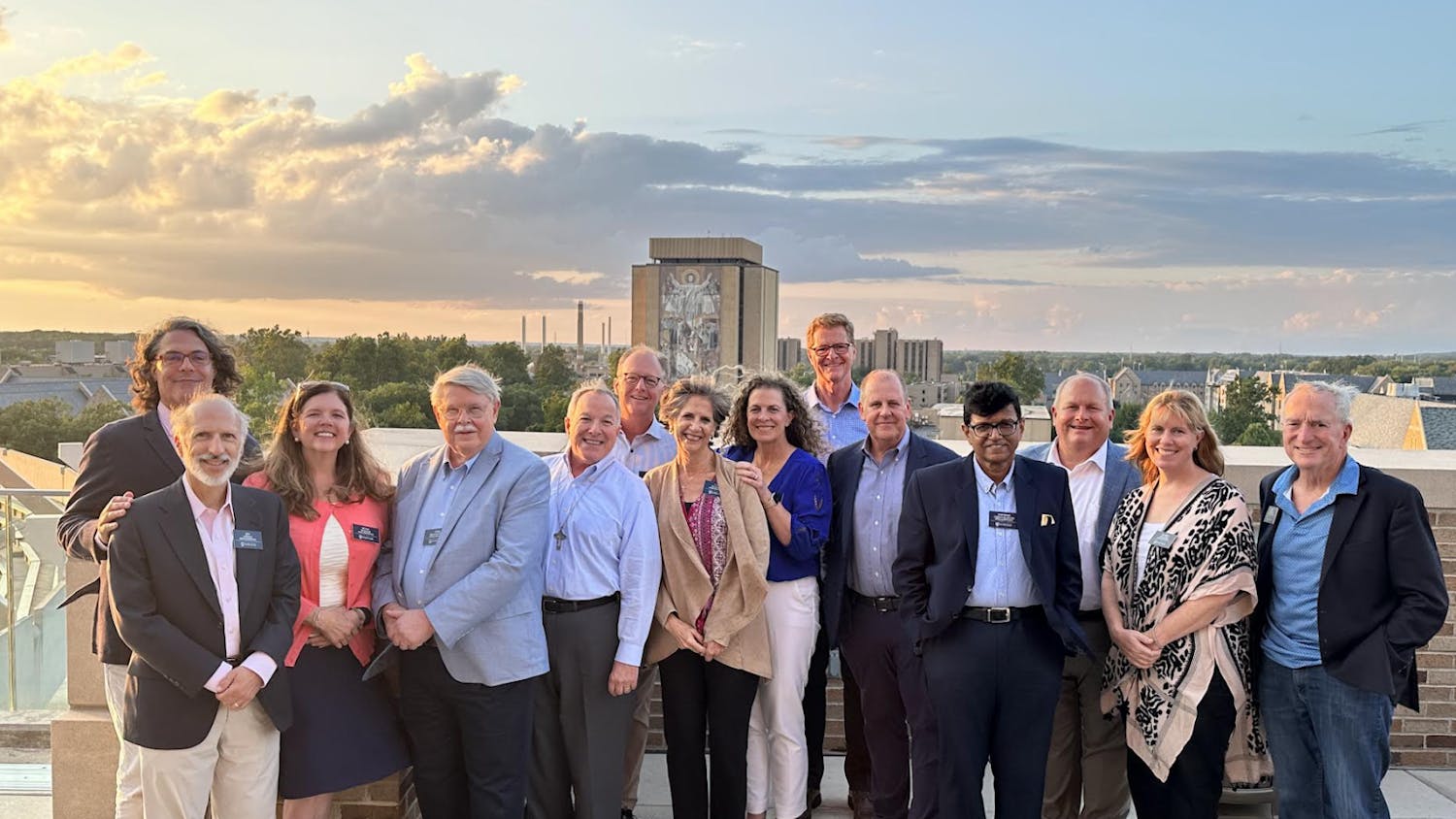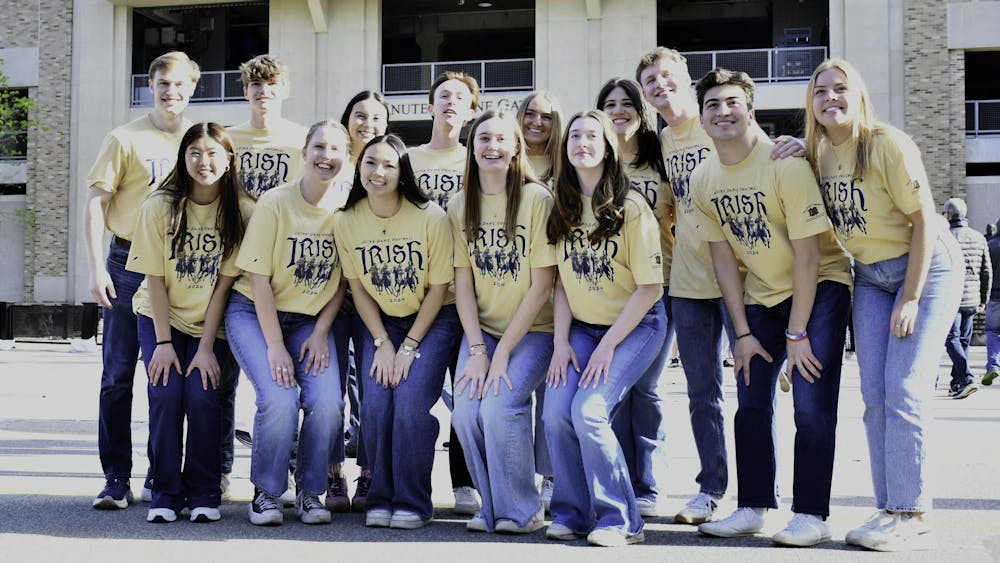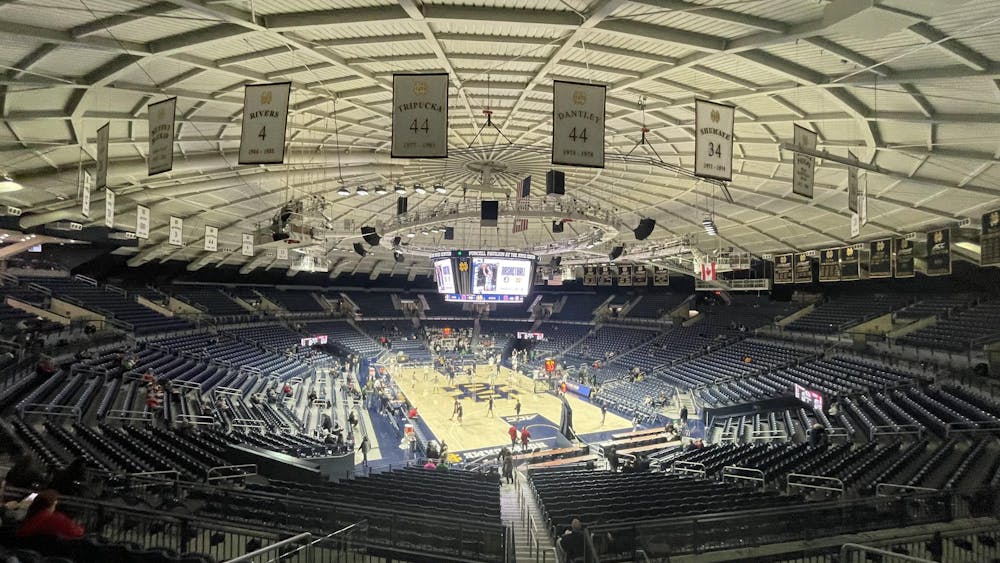Bishop Kevin Rhoades of the Catholic diocese of Fort Wayne–South Bend spoke on the role of architects in service to the Church in a lecture to the School of Architecture in Bond Hall on Wednesday afternoon.
Rhoades said architects serve the Church’s mission of proclaiming the Word of God, the new evangelization through beauty. Architects also serve the sacred liturgy and prayer and the Church’s mission of charity.
“I’m not an expert in architecture,” Rhoades said. “I speak as a bishop of the Church about your service of the Church through architecture. And it’s a service for which I’m deeply grateful, especially as I’m here at Notre Dame because your School of Architecture is renowned for its service of the Church, in not only preserving but fostering anew the Church’s rich tradition of sacred architecture.”
Architects should look at their profession as a vocation, Rhoades said.
“When men and women of faith become architects and see their work as a call from God, when they are led by the spirit of the Gospel, their lives and their work can contribute to the sanctification of the world," Rhoades said. "It becomes a participation in God’s work of creation and also a means of growth in holiness.”
Rhoades spoke of the influence of church architecture in his own prayer life, describing the church he attended as a child as a “beautiful Gothic structure.”
“It was our spiritual home,” he said. “Seeing the sacredness and the beauty of the space, I was naturally drawn to prayer.”
A new church was built in the 1970s, Rhoades said, in a more modern style.
“No longer when I entered the church, was I able to contemplate heavenly realities,” he said. “I could still pray there, but it wasn’t as natural to pray in the new church as it was in the old. The building didn’t draw me into prayer like the old church.
“I share this with you to impress upon you the spiritual vocation that you have as architects, how what you do in building churches impacts people and their spiritual lives. And I don’t blame anybody for what happened at my home parish church. It was the 1970s. There was a lot of confusion. There was confusion about theology, confusion about the liturgy. This confusion and the ‘trendiness’ of the times did a lot of damage. And that damage naturally flowed into the area of church art and architecture."
Rhoades said he believes church architecture is returning to a more traditional style.
“I think of Pope Benedict’s hermeneutic of continuity, not rupture – whether we’re talking about theology, liturgy or architecture," he said. "I believe that this idea has really taken hold; I see it in my priests and I see it in so many young people, this importance of tradition, but not just staying fixed in the past, but continuity. All this will lead, I think, with the help of God’s grace, to a new springtime for the Church and hopefully a discovery or a rediscovery of the faith in the lives of many people. You have a part to play in this exciting venture of the new evangelization.”
Throughout the history of the Church, art and architecture have served the Church as expressions of faith, Rhoades said.
“I’m grateful for what you do here at Notre Dame, to promote the building of churches that are both places of prayer and true works of art. Because really, the Church needs you. Bishops like myself need you," he said. "We need your talent, you ingenuity. We need you to proclaim and serve the mystery of faith in what you do. And your works proclaim the goodness and the beauty of the Christian faith.”
Rhoades said traditional styles of architecture have an order to them that reflects God’s creative activity, in which he brought order from chaos.
“In my opinion, some modern forms of architecture have moved in a direction that does not reflect order. And that leads to a certain expression that I don’t think sufficiently serves the Christian vision of things, let alone the Church’s liturgy,” he said.
“Some forms of modern architecture don’t seem to me to be suitable for church buildings. Because unlike Greek architecture or Roman architecture, which expressed ideas of perfection, of order, of beauty, of truth – they were compatible with Christian teaching — some architecture today doesn’t seem to me to be compatible," he said. "Attempts to make them compatible have often revealed problematic theological views because oftentimes its theology that can be skewed, and that influences architecture."
The sense of the transcendent and the sense of the sacred can be lost, Rhoades said.
“I think it’s imperative that we recover the sense of the sacred in the celebration of the Church’s liturgy and in the Church’s art and architecture," he said. "Truly, sacred art and architecture, and the liturgy, and liturgical music, should be oriented to God, not to ourselves.
“Catholic art and architecture should be in continuity, like the liturgy, with the tradition of the Church through the ages. A church should lift one’s heart and mind to God, not ourselves gathered together to worship him. Beautiful church architecture indeed invites people to lift their minds and hearts to God," he said.
Rhoades said churches should speak of the mystery of God’s beauty.
“The world needs this," he said. "The world needs beauty. The world needs God. God is beauty.”













